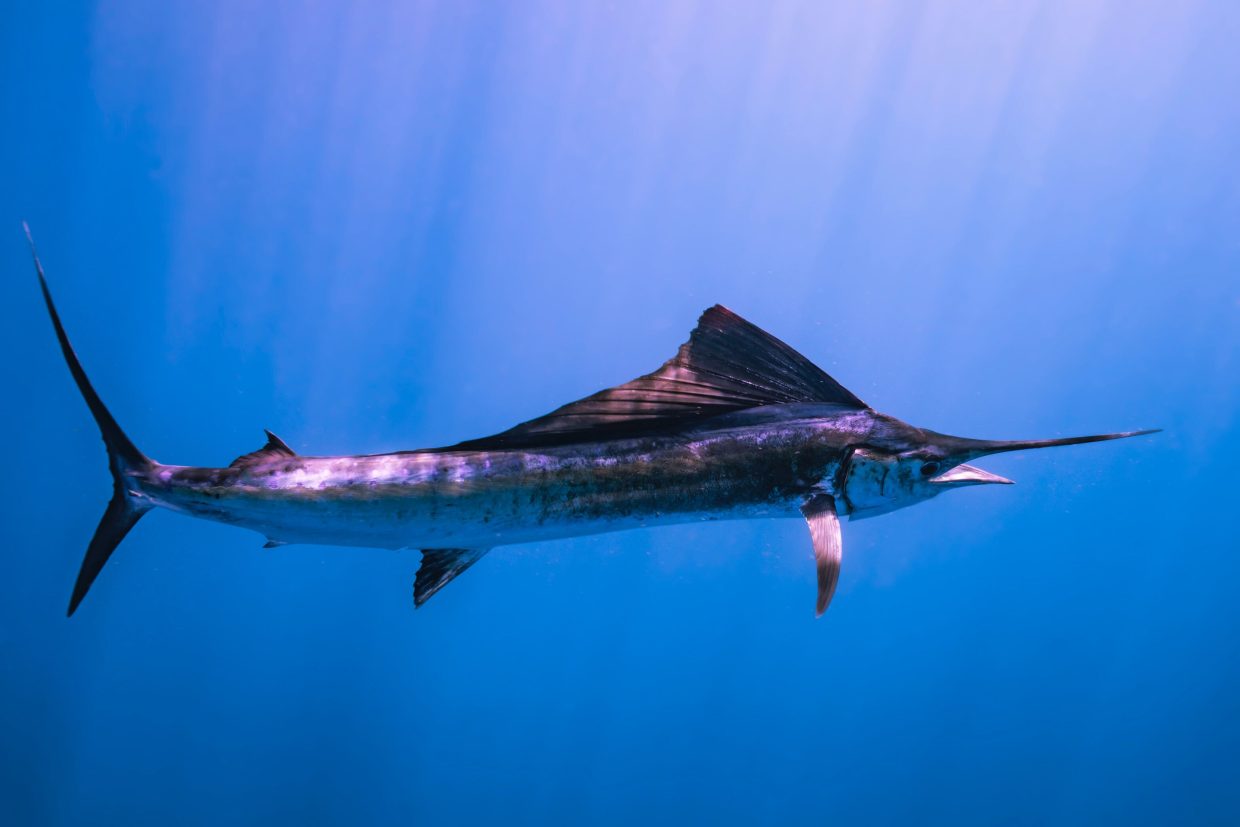Swordfish: Predators of the Deep

Swordfish, scientifically known as Xiphias gladius and also referred to as broadbills in certain regions, are a large and swift predatory fish distinguished by their lengthy, flat, and pointed bills. They belong to the billfish category and are often elusive, making them a popular sport fish. As they mature, swordfish lose their teeth and scales and evolve to be elongated with a round body. They thrive in tropical and temperate regions within the Atlantic, Pacific, and Indian Oceans, inhabiting depths of up to 550 m (1,800 ft) and occasionally reaching depths of 2,234 m. Swordfish can grow up to 3 m (10 ft) in length, while the maximum recorded size is 4.55 m (14 ft 11 in) in length and 650 kg (1,430 lb) in weight.
Anatomy and Characteristics
They are the sole members of their family, Xiphiidae. The name “swordfish” pays homage to their distinct long, sword-like bill. While they may share similarities with other billfish like marlins, they differ physiologically and belong to separate families. Extinct genera such as Xiphiorhynchus and Aglyptorhynchus, which had even longer lower jaws compared to modern swordfish, have also been identified.
Swordfish exhibit remarkable temperature regulation abilities, heating their eyes to temperatures significantly higher than that of the surrounding water through special organs near their eyes. This heating process, which can improve their vision, is unique to only 22 fish species, including swordfish. Additionally, swordfish are ectothermic and have the capacity to conserve heat.
Feeding Habits and Speed
Swordfish are solitary swimmers or, at most, swim in sparse groups. They display unique feeding habits, hunting prey with their impressive speed and agility. Although the notorious claim of reaching speeds of 100 km/h (60 mph) is unreliable, their speed is more accurately estimated at around 36 km/h (22 mph). They are mostly nocturnal feeders, often swimming to the surface in search of smaller fish. Squid and various types of fish make up their diet, and swordfish spend much of their time at depths of up to 550 m during the day.
Threats and Conservation
Their population faces various threats, with almost 50 parasite species documented in swordfish. Despite having minimal natural predators as adults, they are heavily targeted by human fisheries. Efforts have been made to conserve swordfish populations, with a ban on long-lining in place in many areas to aid their recovery from overfishing.
Swordfish are widely adored as a culinary delicacy but caution is advised due to potential toxicity from high mercury levels in their meat. The firm texture of their meat makes it suitable for grilling or cooking in various ways. There is some debate within the Jewish community concerning the kosher status of swordfish, with opinions varying among different authorities and communities. For conservation purposes, it has been specified as a species of moderate to high concern in various regions due to overfishing and uncertain stock status. Greenpeace International has also listed swordfish on its seafood red list.
The swordfish remains a revered icon in the aquatic realm, admired for its unparalleled speed and unique characteristics. With careful management and conservation efforts, they will continue to enchant and captivate seekers of both sport and gastronomy alike.





